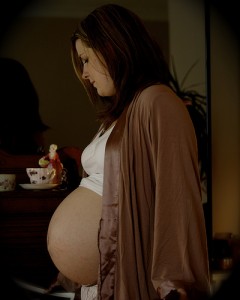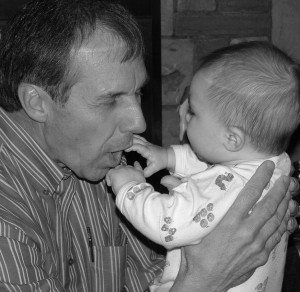
Falling in love with your baby is easy, taking care of a fussy baby… not so easy. All that crying really is your baby’s way of communicating. Now, what on earth is he or she trying to say? And why didn’t anyone warn you about this before you had children? Don’t be tempted to call it colic just yet. You can discover what is wrong.
As a first-time mom, I wrote these instructions for my husband so I could take a break. He was always able to figure out our babies’ cries by using this as a checklist. Once your baby is on a consistent routine, you will eliminate a lot of crying and fussiness by meeting needs before they become urgent. In the meantime – if you’re at your wits end – take a deep breath and try each of these until you find the right one.
Ten things your baby is trying to tell you:
- Change my position. Or change your position; stand, bounce or sway. (While back sleeping may be considered safest, many babies are uncomfortable sleeping on their backs. Research other safe sleeping positions for fussy babies.)
- Burp me. Try different positions, not just on your shoulder.
- Feed me. If I’m really hungry, I may resist a bottle at first. And if I’m usually breastfed, I may not take kindly to a bottle. Be gentle but persistent. It also helps to use a wide-mouth bottle with a medium or fast flow. (Fussy babies are often fussy because we are unable to digest cow’s milk in any form; whether in mom’s diet passed through the breast milk or in dairy-based formula… please try eliminating cow’s milk.)
- Talk to me and sing to me. Let me know you love me.
- Help me sleep. If I won’t look you in the eye, I may be really tired. Take me to a dark, quiet room and rock me to sleep.
- Hold me in the “pooping position.” When I’m semi-reclined in your lap, gently push my knees to my chest or rub my belly. Gas drops or Gripe Water may help relieve gas pains.
- Check my diaper. Cloth diapers may need to be changed more often than disposables, but disposables are more likely to irritate the skin. If diaper rash is severe and not related to a food allergy; try switching to cloth.
- See if I’m too hot or too cold. I probably don’t need a hat, jacket, booties and mittens inside the house.
- Swaddle me. I feel more secure when I’m wrapped snug in a blanket.
- Hold me. It’s what I love most, and I even produce growth hormones when held. Carry me in a sling or other carrier to make both of us happy.
You will know when you’ve been stricken with baby love. Your heart melts at the sight of one tiny grin and the weight of the world seems to lift at the sound of a contented baby sigh. Caring for a baby is exhausting, sometimes frustrating work, but baby love is fierce … and can inspire you to accomplish anything you can imagine. Keep up the great work, you really can do this, and all these challenging stages will pass long before you are ready to give them up.
Do you have a consistent routine yet? At the very least, get up at the same time every morning and go to bed at the same time every night. You can ease a fussy baby simply by giving them a consistent, loving environment. Crying generally boils down to three basic needs: FOOD, SLEEP and COMFORT. The top ten list addresses all these needs.
Mom Dare: Your challenge this week is to make sure you are meeting your own three basic needs. Are you eating healthy meals at regular intervals, sleeping whenever possible and depending upon someone close to you for moral, spiritual and physical support? Taking care of yourself is the best defense against the frustrations of parenting. So take three things off of your To-Do List and pencil in a nap, a healthy meal and time with someone you love instead.
Sharron Wright is the work-at-home mother of three girls, ages 2, 5 and 7. Her mission is to help other new parents feel empowered and to instill in them the confidence to care for their babies in a loving, positive way that respects the uniqueness of all children. Visit her at www.babylovecarebook.com.



